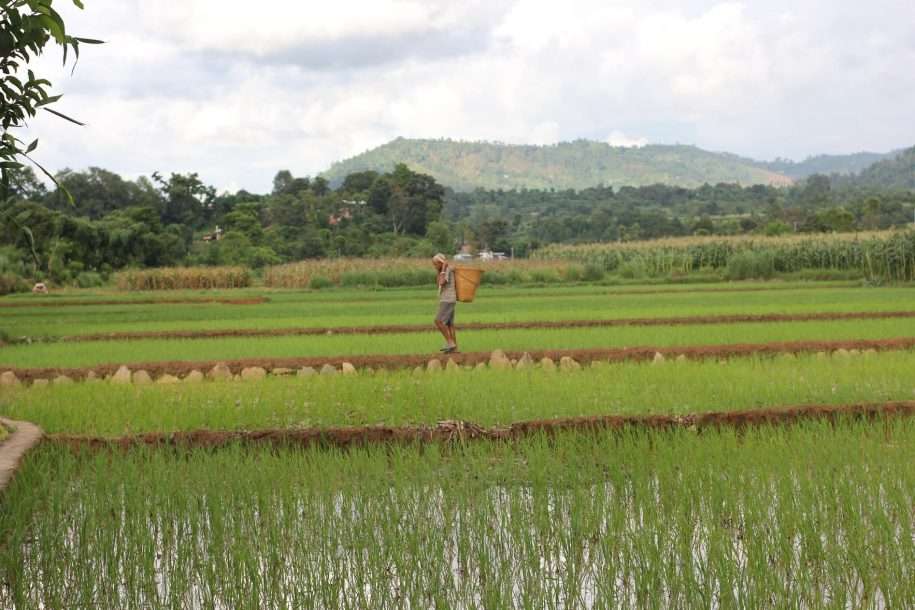How are Farmers Insured? Thoughts for the Next Time you Purchase Rice

By Surabhi Agarwal
“Do you want rice that is 40Rs/KL, 50Rs/KL, or 60Rs/KL?”
A relatively simple question that we, as consumers, face when purchasing rice at a local store. But have we considered how the farmer decides which variety of rice to grow in the season? How does the farmer ensure that the investments he is making in the inputs will result in a profitable output? Generally, insurance is a way to protect such investments. Parchure (2002) estimates that in India about 90% of variation in crop production is caused by changes in rainfall levels and patterns. Through a randomized experiment, A Moshfiq Mobarak and Mark Rosenzweig’s research seeks to study the demand for, and effects of, offering formal index-based rainfall insurance.
The absence of adopting formal insurance among rural poor does not mean the poor are uninsured. However, the informal risk-sharing schemes, identified via the sub-caste networks, find that risk-sharing is incomplete and leads exposed farmers to choose low risk and lower-yield production methods. The study adopts an innovative approach by combining natural variation in levels of access to informal insurance (due to membership in sub-caste risk-sharing networks) with designed (randomized) variation in price and the methods of marketing the insurance product.
The study markets a simple yet innovative index-based rainfall insurance product where the payment schemes are based on publicly observable local rainfall index. This design mitigates moral hazard and adverse selection problems and eliminates the need for in-field assessments, issues faced by the current insurance products in the market. However, the main disadvantage of index insurance is the presence of basis risk, or the potential mismatch between index-based pay outs and the actual losses incurred by the policy holder. This is because the rainfall realized on the land may not perfectly correlate with the rainfall index as measured by the weather station due to the distance of the land from the station. In this study, the effect of basis risk was tested by randomly placing weather stations either at the village level or the block level and testing the take-up on insurance with this variation.
Results
The study confirms that members of informally insured networks that had protected community-level shocks were less likely to purchase the index-based product, but this was not the case if the informal insured protected against individual level shocks. It discovers that in the absence of basis risk, farmers choose full-coverage, formal index-insurance, independent of being informally insured against individual losses. However, with the introduction of basis risk (in areas where the distance was greater), communities that are better able to insure against individual losses may have a greater demand for index insurance (the two products become complements). In addition, this research marketed the product to agricultural labourers, whose livelihoods are weather-dependent. They demonstrated as strong a demand for weather index insurance as cultivating landowners.
Policy Implications
These results provide some important policy implications. First, by placing the weather stations closer to the village-level will reduce basis risk and increase the demand for the insurance product, regardless of the level of informal insurance the farmer may have. Although there may be cost constraints in increasing the number of weather stations, it is a more systematic method of evaluation than in-field assessments which can also be costly and face the limitations mentioned earlier. In addition, currently, agricultural insurance products are only offered to farmers and not agricultural labourers. However, as seen, there is a demand for the insurance product by agricultural labourers who would also be insuring their livelihoods by purchasing the product. There are also results concerning variations in marketing techniques and pricing that are currently being analysed that will provide further policy implications.
To read about these studies and for more information on index-based products, please see our weather insurance web portal.

